Mongolian Lessons in Resourcefulness
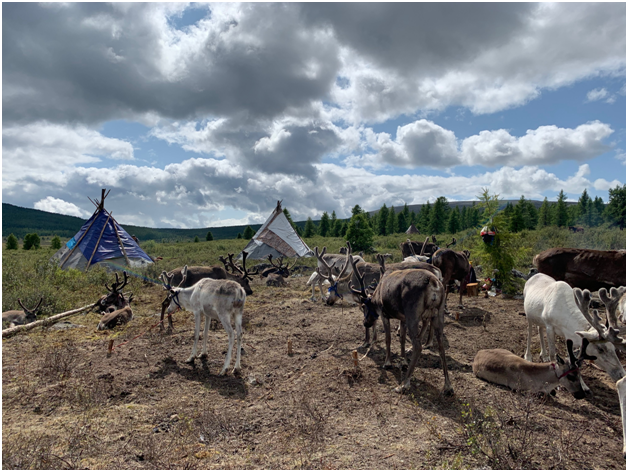
I just returned from a trip to Mongolia – one of the most unforgettable experiences of my life. The people showed more generosity, hospitality and resourcefulness than I’ve ever experienced. When we were with the Reindeer People in their camp, they gave us their teepees to sleep in which were their homes. One of the nights we were there, it rained and the Reindeer men put their blankets on the ground and slept in the rain so we, the strangers in their midst from the West, could sleep protected in their home with a warm fire. I was stunned and deeply touched when I learned this the next morning.

What impressed me most was the resourcefulness of the people we encountered. One day at our base camp near the White Lake in the Taiga, when we were scheduled to take a day trip in the 4 wheel drive cars, we were informed there was no diesel and it was expected “tomorrow”. Our guides knew that tomorrow could mean any day in the future. They didn’t grouse about their plight or wonder why it happened. They didn’t sit down to ponder the meaning of this circumstance or how it messed with their plans. They took it in stride and without a second thought they started problem solving. They contacted the people they knew in a nearby village and within a couple of hours secured a van big enough to hold all of us with a full tank of gas and its own driver. The van showed up at our yurt camp and off we went. The van stayed with us until the diesel arrived.

I saw this kind of problem-solving and resourcefulness on a daily basis. One of the women in our group injured her ankle and couldn’t walk on it. A couple of days later, a pair of crutches appeared that our guides said they had delivered for her. Picture being miles from any major city in a part of Mongolia where there are no roads to speak of, just dirt tracks and miles of open land and nomadic camps. I sure didn’t see any FedEx trucks! How they got them, I have no idea. It was one of the daily miracles of resourcefulness that I experienced. I learned as the trip progressed that no day was going to go the way we thought and a new way was always going to be found through any obstacle or problem. And it wasn’t the kind of resourcefulness that was based in fierce independence like we’re used to in America. It was connected to community. The Mongolian people all showed up for each other, knowing that they would also need help one day or another.
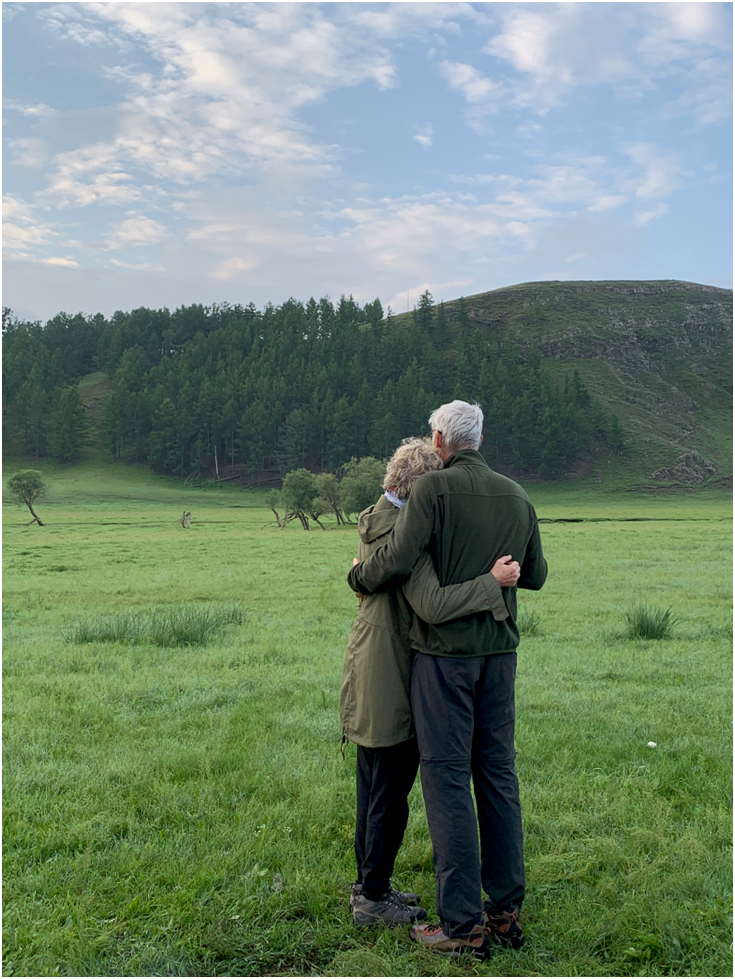 We have become so comfortable in the West with everything from uninterrupted electricity and clean water in our homes, to mail that arrives on time, Ubers that show up at a click on our phones, and regular weekly garbage pick up, we’ve forgotten how to respond well to those things that disrupt our lives. We have taken for granted and come to expect that things will go as planned. When they don’t, we grouse, wonder ‘why me’, and have any number of feelings about it that wastes energy and can make the problem worse.
We have become so comfortable in the West with everything from uninterrupted electricity and clean water in our homes, to mail that arrives on time, Ubers that show up at a click on our phones, and regular weekly garbage pick up, we’ve forgotten how to respond well to those things that disrupt our lives. We have taken for granted and come to expect that things will go as planned. When they don’t, we grouse, wonder ‘why me’, and have any number of feelings about it that wastes energy and can make the problem worse.
So the invaluable learning is to stay connected to your community at home and at work. Adopt a paradigm of resourcefulness, and ask for and give help and hospitality when it’s needed. Whether it’s a project at work, the promotion you’ve always wanted, raising your kids or a relationship, expect that things aren’t going to go as planned because they very rarely do. Our Western lifestyle just gives us the illusion that they will. When they don’t, embrace it, roll up your sleeves and problem solve. When they do as planned, embrace gratefulness. Life is an amazing adventure filled with miracles and the unexpected. Remember how blessed we are in our first world lives, and that even though we don’t always realize it, we need each other.
Thank you to my Mongolian friends for an unforgettable adventure that took me to the heart of what matters most.
 Sabrina Roblin, CPCC has been a professional coach, mentor, and trainer since 2004. She has worked successfully with individuals and for corporate clients that include Cargill, Medtronic and Stantec. Contact her for more information and a complimentary coaching session.
Sabrina Roblin, CPCC has been a professional coach, mentor, and trainer since 2004. She has worked successfully with individuals and for corporate clients that include Cargill, Medtronic and Stantec. Contact her for more information and a complimentary coaching session.
Ask For Help

I had an experience on a hike in the mountains near where I live that reminded me of the importance of not only 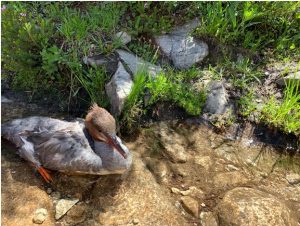 asking for help but receiving it when it’s offered, and interestingly enough it didn’t involve a person, it involved a duck. Yes, a female Merganser duck that fishes in the high mountain rivers and lakes.
asking for help but receiving it when it’s offered, and interestingly enough it didn’t involve a person, it involved a duck. Yes, a female Merganser duck that fishes in the high mountain rivers and lakes.
Hiking with friends, we came upon two young men sitting on the trail. When they looked up and saw us, they pleaded for help. My first thought was that one of them had injured their leg and that it was time for my first aid training to kick in. As I got closer I realized that one of them was holding a wild duck in his hands!
We gathered from their story that they had found her sitting on the trail, that she had a fish hook stuck in her mouth and the line was wrapped around her beak. Between the two of them they had been able to remove the fishing line, but couldn’t remove the hook that was stuck at the back of her throat. While one young man held the duck and I held the beak open and moved her tongue out of the way, the other young man worked to remove the hook. If you know wild animals at all, it’s rare for them to submit to something like this, they usually fight any help. She was so weak and dehydrated that she was still and submitted to us working on her this way. We successfully removed the hook and decided getting water in her was the next most important step.
My hiking buddy picked her up and started toward the lake at full speed, and I was hoofing it behind him, as I had an irrigation syringe in my first aid kit. Our plan was to get her to the water, help her start drinking and release her. We made it to a stream crossing, cooled her off in the water and we got really excited when she took the water I squirted into her beak. We took off again to the lake and set her in the water. She immediately started swimming away, drinking heavily and when we last saw her, she was floating happily.
At the lake we met with a ranger and trail crew who had been camped there and when we shared our story, they were so happy. They had been watching her with binoculars for the last four days, knowing she was in trouble and there was nothing they could do to help her as she would not allow them to get close. They thought she was going to die.
How often have you or someone you know needed help and been loath to ask for it or accept it? We aren’t as wild as that duck, yet we can be as afraid to admit we need help and to receive it when it’s offered, until we’re that desperate. It takes courage to ask for help. There is great vulnerability in the asking and the receiving, especially in any kind of leadership position. Just like the duck, we can carry an innate fear of vulnerability and that we’ll be taken advantage of. And yes, in some cultures and families, vulnerability is a risk and is not respected. If you have a fear of asking for help, use your discernment and ask someone you trust, whether it’s a friend, family member or team member. Don’t wait until your project is in the toilet, your relationship implodes or you’re in the emergency room. Ask for help – it is a leadership skill. And you could be as lucky as that duck we found on the trail.

Sabrina Roblin, CPCC has been a professional coach, mentor, and trainer since 2004. She has worked successfully with individuals and for corporate clients that include Cargill, Medtronic and Stantec. Contact her for more information and a complimentary coaching session.
Leadership Lessons from the Wilderness
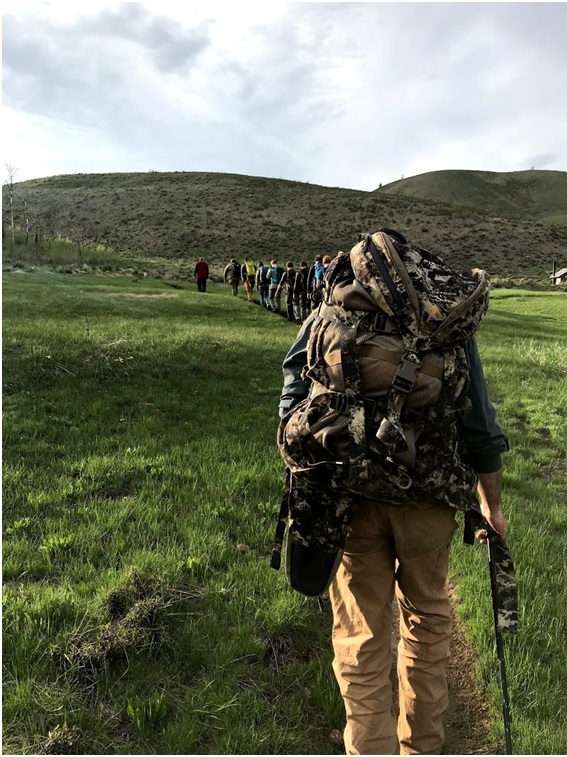
I recently participated in a 10-day intensive training to become a Wilderness First Responder through a NOLS training program that quickly took me out of my comfort zone and reminded me of the leadership lessons available in wilderness settings. They apply whether in the wilderness or in your indoor office context, as a traditional work setting is its own kind of uncontrollable wilderness even though its manmade construct gives the illusion of being controllable. I want to thank NOLS for the great training and the following leadership reminders:
Effective leadership demands competence in the skills required by your position as well as the ability to 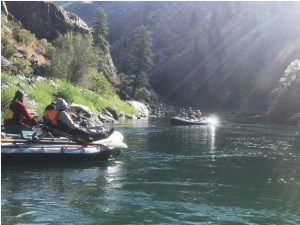 manage a group, and capitalize on the knowledge, experience and abilities of your team.
manage a group, and capitalize on the knowledge, experience and abilities of your team.
Skill up and get training for any areas where you need more competence. Find out who your team members are and what skills they have. In one first aid wilderness scenario, five of us had to build a full leg splint out of whatever we had on hand. We made the mistake of not emptying all our backpacks first to inventory everything we had before starting to build the splint and learned a good lesson from that. It took twice as long and we had to start over half way through the process after we got smart enough to do our inventory. After some creative problem solving, we ended up making e a very effective splint out of backpacks, hiking poles, spare clothes and ace bandages. What tools and resources does your team have in their “backpacks” and how can you best put them to work on the project or problem at hand?
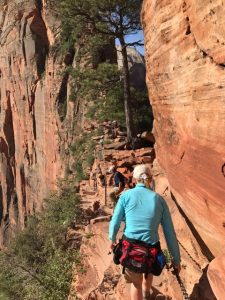 Very often the reason climbers die on Everest is because they become fixed on their goal of getting to the top without regard for their fellow climbers or the weather. Ego, unhealthy pride and arrogance drive the decisions and people die for it. Be situationally aware. There may be a storm coming. Continuously work on your team culture. Have dignity, respect and a solid work ethic at its core. Focus will be important for everyone once the initial excitement of the new project or journey wears off and the hard work begins.
Very often the reason climbers die on Everest is because they become fixed on their goal of getting to the top without regard for their fellow climbers or the weather. Ego, unhealthy pride and arrogance drive the decisions and people die for it. Be situationally aware. There may be a storm coming. Continuously work on your team culture. Have dignity, respect and a solid work ethic at its core. Focus will be important for everyone once the initial excitement of the new project or journey wears off and the hard work begins.
Anxiety and fear can throw you off your game with grave consequences. We learned in our first aid training that often, when someone is struggling with a life threatening allergic reaction, the care giver under pressure inserts the Epi pen medication upside down, shooting it into their own thumb rather than into their patient, resulting in injury to themselves and a continued survival threat to their patient. Self-awareness is an important personal trait – reflect on and learn from experiences. This takes objective self-assessment and humility. Know how you react to stress and change, and what your hot buttons are. Gather the internal resources you need to be calm and focused under pressure. Reactivity and losing focus can be a killer in both the wilderness and the office. There are many options to choose from to strengthen your capacity for calm under pressure, including the practices of mindfulness, meditation, and yoga.
Listen to your team and the forces at work all around you. Inspire both good leadership and good followers who empower leadership as well as do their part on the team. Stay honest with yourself and your team about your goals, the risks and how you’re going to get there. Have a plan mapped out, share it with your team, get their feedback and be flexible – circumstances may require you to change plans and find a different route up the mountain.
Tolerance for adversity and uncertainty is important as change is constant and in leadership easy, uneventful days are rare. Expect the unexpected and get comfortable with discomfort. The more capacity you have for it, the better you’ll perform.

Sabrina Roblin, CPCC has been a professional coach, mentor, and trainer since 2004. She has worked successfully with individuals, entrepreneurs and for corporate clients that include Cargill, Medtronic and Stantec. Contact her for more information and a complimentary coaching session.
Cultivating Resilience
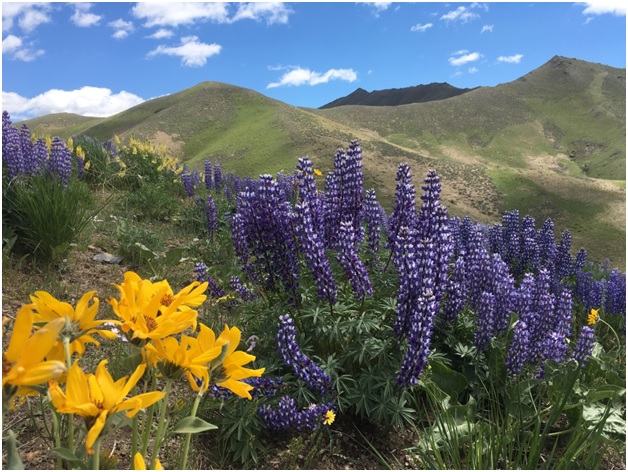
Spring has arrived. As I look out my window, I see four feet of snow everywhere, and yet underneath, asleep in the frozen ground are the green grass, flowers, perennials and vines that will burst out of the ground as soon as the sun makes its way to the soil. It always amazes me that so much life and color slumbers in the frozen ground all Winter to re-emerge with great energy and enthusiasm in the Spring. It is a reflection of the inner resources that lie dormant inside us until we need them, and of the resilience that is available to all of us if we know how to cultivate it.
Not only is Spring a season, but according to the dictionary it is “a resilient device….that can be pressed or pulled but returns to its former shape when released, used chiefly to exert constant tension or absorb movement.” We need that kind of resilience in both our personal and professional lives, especially in leadership roles and times of change and stress when we’re pressed and pulled by forces beyond our control. Whether they come from work, parenting, relationship, loss or world events, resilience is critical to health and well-being.
We all have a resilience zone where we live most of the time, and we have a range of emotion and experience within that zone. We can be angry, sad, or upset, but we are still able to stay calm and respond to whatever is challenging us. A stressful event can happen that bumps us out of our zone. When we get bumped out we can go out ‘high’ into anxiety, frustration and anger. When we get bumped out ‘low’, we can go into depression and withdrawal. The capacity of our resilience and what bumps us out is different for everyone. The toughest situation is when the stressor is consistent over a long period of time. That can strain our resilience the most and is when we need to be most attentive to our self care. The more we can cultivate our resilience the quicker we can recover back to our zone.
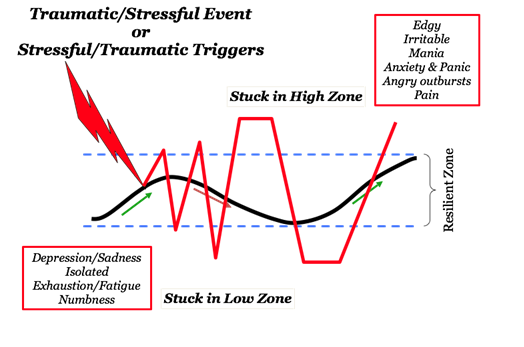
The above graphic of the zone is from the Community Resiliency Model developed by the Trauma Resource Institute. I became certified as a teacher of their model last year and have found the knowledge and tools to be really helpful to my clients – both individuals and groups.
Self care and engaging our five senses – taste, touch, hearing, vision and smell are keys to resilience. The following practices will cultivate resilience:
- Meditation, yoga
- Time in nature
- Singing, Dancing, Laughing
- Creative projects that make you lose track of time
- Rest
- Awe, wonder, beauty
- Any physical activity you enjoy
- Hugs
- Water – swimming, bathing in and relaxing with a drink of water
- Gratitude
If you find yourself bumped out of your zone over a period of time and unable to recover, reach out to a trusted professional –therapist, coach, spiritual guide, etc. for support.
And remember, resilience and well-being are always within reach even when your personal landscape feels stark and cold. It’s there ready and waiting for you.
 Sabrina Roblin, CPCC has been a professional coach, mentor, and trainer since 2004. She has worked successfully with individuals and for corporate clients that include Cargill, Medtronic and Stantec. Contact her for more information and a complimentary coaching session.
Sabrina Roblin, CPCC has been a professional coach, mentor, and trainer since 2004. She has worked successfully with individuals and for corporate clients that include Cargill, Medtronic and Stantec. Contact her for more information and a complimentary coaching session.
Love and Leadership
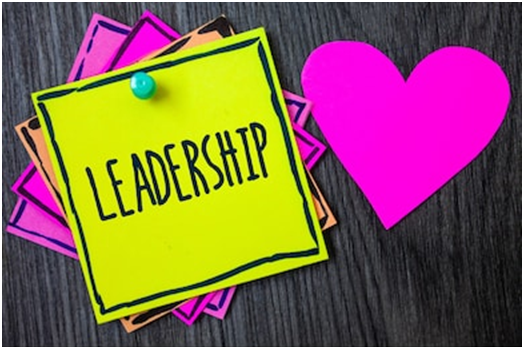
In a corporate environment, love can be a four letter word. It’s just not used. There is more sensitivity and fear about it in the workplace than ever before and yet leadership without love leads to tyranny and corruption. We see it and experience it in the world daily. So, what about love in the workplace?
What about the fear that if you show you care you will be taken advantage of, pushed aside, not respected? Well, that’s what boundaries, discipline and structure are for. Love alone will not lead a team or an organization and yet without it, leadership is not only unsustainable, it leads to breakdown, burnout, decreased productivity, diminished creativity and high turnover.
Research shows that people don’t leave jobs, they leave bosses, so if you want to recruit and keep top talent, in addition to your skills and experience, you have got to bring your heart to work. Who are we without our hearts anyway? We are not being human. Without heart, work interactions are cold and transactional, resulting in the loss of caring, connection and humanity.
How do you show love in a corporate environment without getting yourself in trouble? You don’t have to use the actual ‘L’ word. You show it through loving action – by caring enough to listen to, respect, acknowledge, empower, be curious about and show warmth to your employees and co-workers. Of those, I’ve found the top three are listening, curiosity and acknowledgement. So how is it done?
![]() Listen with complete focus on the other person. Don’t be thinking about how you’ll respond, just be present and listen to them – their words, and the energy behind their words. Then repeat back what you think you heard before responding to what was said.
Listen with complete focus on the other person. Don’t be thinking about how you’ll respond, just be present and listen to them – their words, and the energy behind their words. Then repeat back what you think you heard before responding to what was said.
Be curious by asking open ended questions rather than yes/no questions. Examples are: “What did you learn? How can we turn this around? What would make a difference? How’s the family?”
Acknowledgement is more than saying, “great job”, to be effective it has to be specific – name what the person did and the positive impact it had. Who or wha t did they impact and why?
t did they impact and why?
In companies and teams where there is high productivity and low turnover, employees know they are loved, respected and cared for. You won’t hear them use the ‘L’ word, but that is the ingredient that keeps them coming back. You make a difference every day in how you show up, so make it a positive one. Don’t leave your heart at home. Express love through the practices of listening, curiosity and acknowledgement. Add healthy boundaries and you will supercharge your leadership both personally and professionally.
 Sabrina Roblin, CPCC has been a professional coach, mentor, and trainer since 2004. She has worked successfully with individuals and for corporate clients that include Cargill, Medtronic and Stantec. Contact her for more information and a complimentary coaching session.
Sabrina Roblin, CPCC has been a professional coach, mentor, and trainer since 2004. She has worked successfully with individuals and for corporate clients that include Cargill, Medtronic and Stantec. Contact her for more information and a complimentary coaching session.

Recent Comments